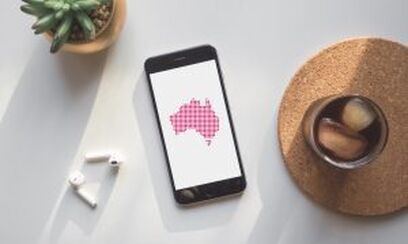Sleepy-eyed and bushy-tailed Yump jumped on an early morning plane to Sydney in March this year to attend the Agile UX conference organised by UX Australia. We heard from an impressive line-up of speakers on what it takes to deliver a great user experience within the structure of the Agile process.
For all the new kids on the Agile UX block, here are a few terms that may be useful to know.
UX stands for User Experience, a term used to describe a range of core aspects necessary to ensuring a product or design is as efficient and enjoyable to use as possible. Successful user experience design is measured by usefulness, usability, appeal and level of engagement. Agile methodology, a project management process which originated from software development, helps teams respond to sudden and unpredictable changes through incremental, iterative work cycles, known as sprints.

Agile UX is a process that unifies developers and designers through collaboration-centred methodology. The agile process is a time boxed, iterative approach to incrementally building a project from inception. Projects are broken down into short cycles known as iterations, consisting of smaller tasks such as design, coding and user testing, that are repeated over the entirety of the project.

Now that you have caught up, we’ll move on to our favourite quotes from the conference.
1.“Life's too short to build something no one wants.” - Ash Maurya (Author of Running Lean and Creator of Lean Canvas)
One of the best ways to test a product or design is to release it into the wild. Testing or sharing a design with people who may utilise your project/product in everyday life allows you to understand any design problems and prioritise what to resolve or improve in a contextual environment. As David Orr so eloquently puts it, “usability is the killing field of cherished notions.” Collecting insights on the ground allows you to generate more ideas, kill ideas that don’t work as you thought they might, and test them at speed, also known as lo-fi testing.

2.“Negotiate the rules of engagement upfront and define the standards together” - Cameron Grice (ABC)
The Agile process is not about going it alone! Gather support from your team by offering a vision and exit plan. Working in an Agile environment follows a structure in which teams are aligned to resolve dependencies through identifying each other’s needs, and negotiating solutions with all team members. Rome wasn’t built in a day, so similarly Agile teams need time to form and develop trust between team members. Ensure good communication so that team members share and follow future visions.
As Jake Causby (Westpac) puts it, successful agility relies on two things:
- Effective collaboration - “We’re all in this together.”
- Continuous improvement - “There’s no such thing as ‘best practice’; only better practice.”
3.”We need to set realistic expectations on UX engagement and quality.” - Warwick Bracken (Oakton)
At top level, the Agile landscape may present challenges for management as there are many players with different expectations about how UX works. As UX practitioners we want to know that stakeholders place importance on the process; but it’s not hard to understand why they may feel disengaged from Agile, which requires numerous processes and commitment to a long-term vision. Megan Dell from REA gave us some insight on how combining old school methods with the Agile process can affect the way in which stakeholders engage with different iterations of a project. In one particular project, she conducted an incentivised diary study (a type of user testing) in which she sent users a physical journal to document the testing of a company product. Each week participants sent their diaries back filled with insightful comments about their experience of using the product. As a result of having tangible and consistent feedback, stakeholders took a surprising interest in reading the diaries; enabling them to be actively involved in understanding the iterative process as well as the customers’ feelings. Agile doesn’t have to be a strictly stringent process that only exists in the digital space. Think outside the box and involve top level management using unique strategies.
4.“Work early but craft incremental experiences with an end vision” - Karen Leong (Sportsbet)
Agile is an elastic process and as such, teams must remain progressive and reactive rather than committed to a single idea. During the process of delivering a project, rather than focusing on the present, it is important to look to the future and be ruthless about the project’s scope. Consistently challenging the design or development of a project and integrating feedback into each iteration would allow the Agile process to work effectively.
5.“Vision starts with a firm foundation and carries through with design principles” - Lexi Thorn & Scott Maywood-Bryant (ANZ)
A shared understanding of the vision, business context and design challenges are integral to laying the foundations for UX design and prototyping. Being transparent about the UX process enables the fostering of trust throughout an organisation, which in turn enables the design process to run as smoothly as possible. Rather than solving problems linearly, learn to solve problems as a team - cross disciplinary team culture is important for resolving dependencies. It allows everyone in the team to wear “multiple hats” and work together through each iteration process.
Agile UX is built upon a complex foundation that usually starts at the very root of any enterprise - the team! Once you have a team, an aligned vision and an understanding of the iterative process, the possibilities of what you can prototype and test are endless.
At Yump, a digital agency in Melbourne specialising in user-centred designs, our team uses Agile UX methodologies in the delivery of our projects. With each iteration (or sprint), we are constantly working on improving the solutions we build through regular testing as well as improving our internal processes through retrospectives. If you are a UX practitioner looking to learn more about the Agile process or an active Agile UX “believer” looking to brush up your knowledge with the latest case studies around Australia, we hope to see you at the next Agile UX event.
By Holly Bartholomeusz and Yuan Wang









